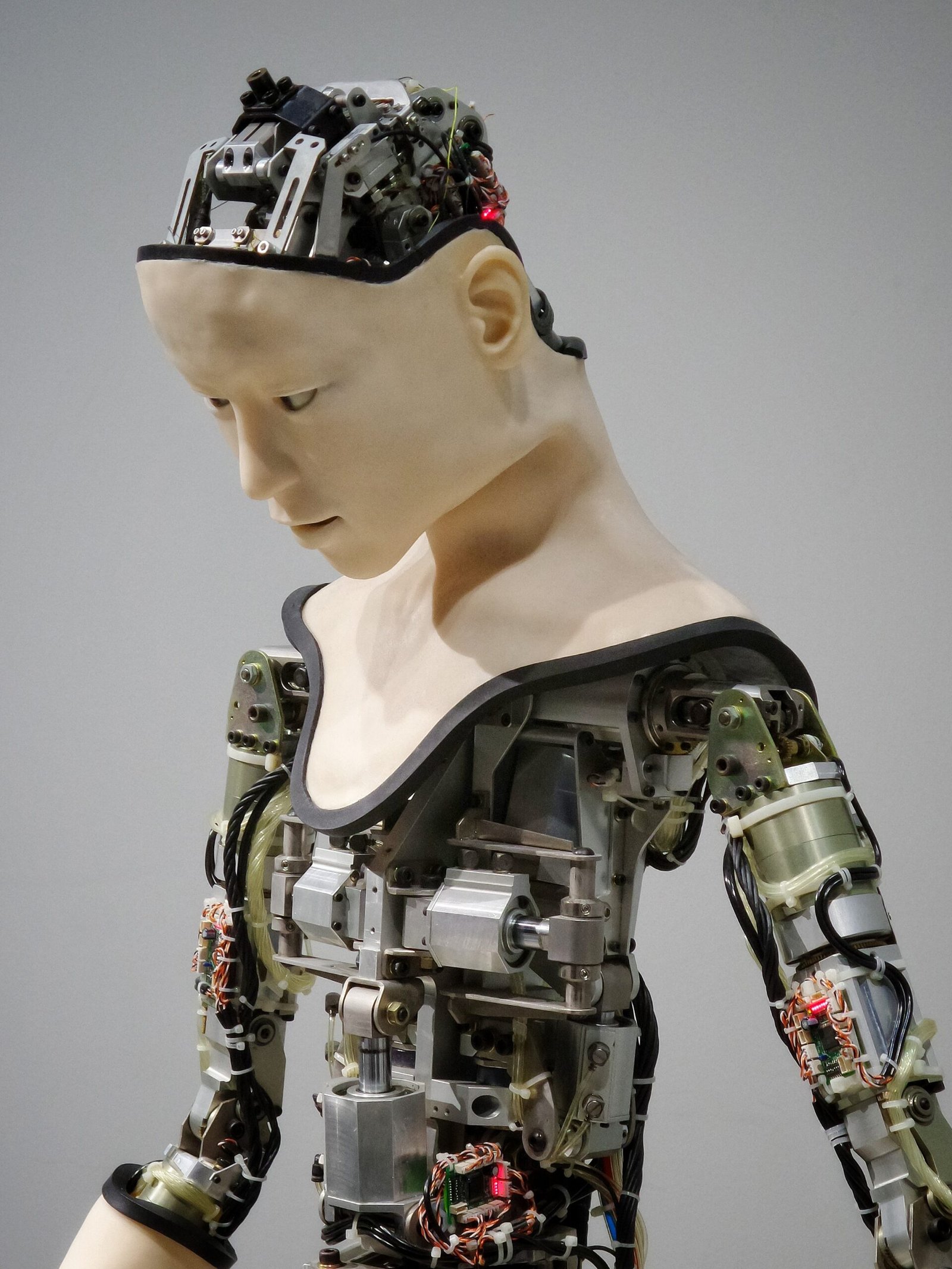Imagine having a virtual assistant right at your fingertips, ready to answer your questions, provide recommendations, and assist with any task you need help with. Enter chatbots – the friendly digital companions designed to interact with you through chat windows and messaging apps. If you’ve ever wondered what chatbots are and how they work, you’re about to find out. In this article, we’ll explore the exciting world of chatbots, uncovering their role in enhancing customer experiences, streamlining business operations, and revolutionizing the way we interact with technology. Get ready to discover the fascinating world of chatbots and their endless possibilities.

This image is property of images.unsplash.com.
Definition of Chatbots
Basic explanation of chatbots
Chatbots are computer programs that simulate human conversation through text or voice interactions. They are designed to understand and respond to user queries and provide relevant information or assistance. Chatbots use a combination of artificial intelligence (AI), natural language processing (NLP), and machine learning algorithms to interpret and analyze user inputs and generate appropriate responses. They can be integrated into various platforms and applications, such as messaging apps, websites, and voice assistants.
Functions and purpose of chatbots
The main functions of chatbots are to automate and streamline communication processes, enhance customer experiences, and provide efficient support. They can be programmed to perform tasks such as answering frequently asked questions (FAQs), assisting with product recommendations and purchases, providing personalized information, and resolving customer issues. Chatbots can handle multiple conversations simultaneously, offering real-time responses and reducing the need for human intervention. Overall, their purpose is to improve user satisfaction, save time, and enhance the efficiency of various interactions.
History of Chatbots
Early origins of chatbots
The concept of chatbots dates back to the mid-20th century when computer scientists began experimenting with artificial intelligence and natural language processing. One of the earliest chatbots was ELIZA, developed in the 1960s by Joseph Weizenbaum. ELIZA could engage in simple conversations by using pattern matching and scripted responses. Although limited in its capabilities, ELIZA laid the foundation for future chatbot development.
Milestones in chatbot development
Over the years, chatbot technology has evolved significantly, leading to several milestones in its development. In 1995, the introduction of the internet and web-based chatbots enabled users to interact with automated systems through online platforms. In 2001, SmarterChild, a chatbot on AOL Instant Messenger, gained popularity and demonstrated the potential of chatbots for personalized assistance and information retrieval.
Emergence of AI-powered chatbots
With the advancements in artificial intelligence and machine learning, chatbots have become more sophisticated and capable of understanding complex queries. AI-powered chatbots leverage natural language processing techniques to accurately interpret user inputs and generate contextually relevant responses. They can learn from user interactions and improve their understanding and performance over time. This has opened up new opportunities in various industries, including customer service, e-commerce, and personal assistance.
Types of Chatbots
Rule-Based Chatbots
Rule-based chatbots, also known as scripted chatbots, rely on predefined rules and decision trees to generate responses. They follow a predetermined script and provide answers based on specific keywords or patterns in user inputs. Rule-based chatbots are relatively simple and suitable for handling straightforward queries and FAQs. However, they have limitations in handling complex or ambiguous questions, as their responses are limited to the predefined rules.
AI-Powered Chatbots
AI-powered chatbots, also referred to as intelligent chatbots, utilize artificial intelligence techniques, including natural language processing and machine learning algorithms. These chatbots can understand and process natural language inputs, allowing for more meaningful and contextually appropriate responses. AI-powered chatbots can learn from user interactions and improve their performance over time, enhancing their ability to handle complex queries and engage in more sophisticated conversations.
Virtual Assistants
Virtual assistants are advanced AI-powered chatbots that can perform a wide range of tasks and provide personalized assistance. They are designed to understand user preferences, learn from previous interactions, and offer proactive help. Virtual assistants can schedule appointments, set reminders, answer questions, make recommendations, and perform other tasks based on user commands. They are typically integrated into devices such as smartphones, smart speakers, and smart home systems, providing seamless and hands-free interactions.
Working Principles of Chatbots
Natural Language Processing (NLP)
Natural language processing is a key component of chatbot technology. It enables chatbots to understand and interpret human language inputs. NLP involves various techniques such as syntactic parsing, semantic analysis, and sentiment detection to extract meaning from user queries. By analyzing the structure and context of the text or voice input, chatbots can determine the user’s intent and generate appropriate responses.
Machine Learning Algorithms
Machine learning algorithms play a crucial role in AI-powered chatbots. These algorithms allow chatbots to learn from large volumes of data and improve their performance over time. By training on a diverse dataset of conversations, chatbots can recognize patterns, identify user preferences, and generate more accurate responses. Machine learning algorithms can also enable chatbots to adapt to changing contexts and improve their understanding of user inputs.
Speech Recognition
Speech recognition technology allows chatbots to understand and process spoken language inputs. By converting speech into text, chatbots can analyze and interpret the user’s voice commands or queries. Speech recognition technology has significantly improved in recent years, enabling more accurate and reliable interactions with chatbots. This capability is particularly valuable in applications such as voice-activated virtual assistants or customer support services.
Response Generation
Once chatbots have processed the user input and determined the intent, they generate appropriate responses using various techniques. Rule-based chatbots rely on predefined templates or scripts to generate responses. AI-powered chatbots employ natural language generation algorithms to create contextually relevant and coherent responses. These algorithms take into account the context, user preferences, and available information to generate accurate and personalized replies.

This image is property of images.unsplash.com.
Applications of Chatbots
Customer Service and Support
Chatbots are widely used in customer service and support applications. They can handle customer inquiries, provide product information, assist with troubleshooting, and even process transactions. Chatbots offer immediate responses, reducing wait times and improving customer satisfaction. They can also handle a large volume of inquiries simultaneously, ensuring 24/7 availability and efficient support.
E-commerce and Sales
Chatbots are valuable tools for e-commerce platforms and online sales. They can guide users through the buying process, make personalized product recommendations, and provide answers to frequently asked questions. Chatbots can streamline the customer journey and increase conversion rates by offering real-time assistance and improving the overall shopping experience.
Information Retrieval and FAQs
Chatbots are ideal for information retrieval and handling frequently asked questions. They can quickly search through large databases or knowledge bases and provide users with relevant and accurate information. By automating these processes, chatbots save valuable time for both users and businesses, ensuring quick and efficient access to information.
Personal Assistance
Virtual assistants, powered by chatbot technology, act as personal assistants, helping users manage their daily tasks and activities. They can schedule appointments, set reminders, send notifications, provide weather updates, and perform various other functions based on user preferences. Virtual assistants offer personalized and proactive assistance, making users’ lives easier and more organized.
Education and Training
Chatbots can also play a significant role in education and training. They can provide personalized tutoring, answer students’ questions, offer guidance on course selection, and provide learning resources. Chatbots can adapt their teaching style and pace to individual students’ needs, enhancing the learning experience and providing additional support outside the classroom.
Benefits of Chatbots
Improved Customer Experience
By providing prompt and accurate responses, chatbots significantly improve the overall customer experience. They offer instant assistance, reducing wait times and eliminating the frustration of long response times or unavailability. Chatbots can also personalize interactions, remembering past conversations and preferences, creating a more personalized and engaging experience for users.
24/7 Availability
Chatbots ensure round-the-clock availability, allowing users to access information or support whenever they need it. Unlike human agents, chatbots do not require breaks or vacations, enabling businesses to provide uninterrupted service. This availability is particularly beneficial for global businesses that cater to customers in different time zones.
Efficient Support and Reduced Response Time
Chatbots can handle multiple conversations simultaneously, ensuring efficient support without any delays. They can provide immediate responses to user inquiries, reducing the need for users to wait for human agents. Chatbots also streamline the support process by automating routine tasks, allowing human agents to focus on more complex queries or issues.
Cost Savings for Businesses
Implementing chatbots can result in significant cost savings for businesses. Chatbots can handle a large volume of inquiries without the need for additional human resources. By automating customer service, businesses can reduce labor costs and allocate resources more effectively. Chatbots also minimize the risks of human errors and provide consistent and accurate responses, further improving operational efficiency.

This image is property of images.unsplash.com.
Challenges and Limitations of Chatbots
Language and Context Understanding
Despite advancements in natural language processing, chatbots still face challenges in understanding complex language inputs, colloquialisms, or ambiguous queries. They may struggle to interpret context or detect nuances in meaning, leading to inaccurate or irrelevant responses. Developing chatbots that can understand and respond accurately to a wide range of user inputs remains a challenge.
Lack of Emotional Intelligence
One of the limitations of chatbots is their inability to understand and respond to emotions. Chatbots lack the ability to empathize or understand the emotional state of users, making it challenging to provide appropriate emotional support. Although efforts have been made to incorporate emotion detection algorithms, achieving true emotional intelligence in chatbots remains a complex task.
Complex and Specific Queries
While chatbots excel at handling routine inquiries or frequently asked questions, they may struggle with complex or specialized queries that require deep domain knowledge. Chatbots may provide generic or incomplete responses in these cases, leading to user dissatisfaction. Incorporating advanced knowledge bases or integrating with experts in specific fields can help overcome this limitation.
Privacy and Security Concerns
Chatbots often handle sensitive user information, such as personal details or financial data. Ensuring the privacy and security of this information is crucial. Chatbot developers must implement robust security measures to protect user data from unauthorized access or breaches. Additionally, chatbots must comply with privacy regulations and provide transparent information about data collection and usage.
Chatbot Platforms and Tools
Popular chatbot development platforms
Several popular platforms facilitate chatbot development, providing tools and frameworks to create and deploy chatbots. These platforms, such as Microsoft Bot Framework, IBM Watson Assistant, and Google Dialogflow, offer a range of features, including natural language processing capabilities, development tools, and integration options. Developers can choose the most suitable platform based on their requirements, programming skills, and target platforms.
Frameworks and APIs
In addition to development platforms, various frameworks and APIs are available to simplify chatbot development. Frameworks like Rasa and Botpress provide pre-built components and libraries for building chatbots, reducing development time and effort. APIs such as Wit.ai and Amazon Lex offer natural language processing functionalities that can be integrated into chatbot applications, enhancing language understanding and response generation capabilities.
Natural Language Processing Tools
Natural language processing tools are essential for chatbot development. Open-source libraries and frameworks like TensorFlow and spaCy provide a wide range of functionalities for language processing, including text parsing, entity recognition, and sentiment analysis. These tools help chatbot developers handle natural language inputs and extract meaningful information from user queries.
Future Trends in Chatbots
Artificial Intelligence Advancements
With ongoing advancements in artificial intelligence and machine learning, chatbots will become even more intelligent and capable. They will further improve their language understanding abilities, context awareness, and personalized interactions. Enhanced machine learning algorithms will enable chatbots to continuously learn and adapt to user behavior, providing more accurate responses and even predicting user needs.
Voice-Activated Chatbots
Voice-activated chatbots, also known as voice assistants, will gain popularity with the increasing adoption of voice-controlled devices. Users will be able to interact with chatbots using voice commands, enabling hands-free and natural conversations. Voice-activated chatbots will offer a more seamless and intuitive user experience, making them particularly useful in applications like smart home systems and in-car assistants.
Integration with Internet of Things (IoT)
Chatbots will increasingly be integrated with the Internet of Things (IoT), creating a connected ecosystem of devices and services. Chatbots will interact with smart devices, such as thermostats, appliances, or wearable devices, enabling users to control and manage them through voice or text commands. This integration will enhance automation, convenience, and efficiency in various domains, including smart homes, healthcare, and industrial settings.
Personalization and Context-Awareness
Future chatbots will prioritize personalization and context-awareness, tailoring their responses and interactions to individual users’ preferences and needs. They will leverage user data, historical interactions, and external information sources to provide more targeted and relevant assistance. Context-aware chatbots will understand the user’s situation and adapt their responses accordingly, creating more meaningful and engaging conversations.
Ethical Considerations of Chatbots
Transparency and Disclosure
Transparency is an important ethical consideration in chatbot development. Users should be made aware that they are interacting with a chatbot and not a human. Chatbots should clearly disclose their identity and purpose, allowing users to determine the source of information and make informed decisions. This transparency builds trust and avoids deception or misunderstanding.
Ethical Responsibility in Programming
Chatbot developers have a responsibility to program chatbots with ethical considerations in mind. Chatbots should not engage in malicious or harmful behavior, promote misinformation, or influence users inappropriately. Developers should prioritize the well-being of users and ensure that chatbots respect ethical norms and societal values.
Avoiding Bias and Discrimination
It is essential to prevent biases and discrimination in chatbots’ behavior and responses. Bias in training data or algorithms can lead to unfair or discriminatory outcomes. Developers should carefully train chatbots using diverse and unbiased data sources, and regularly test and evaluate their performance to identify and mitigate any biases. Ensuring fairness and inclusivity is crucial for ethical chatbot development.
Maintaining User Privacy
Chatbot developers must prioritize user privacy and data protection. Chatbots often handle sensitive user information, and it is important to implement robust security measures to safeguard this data. Developers should comply with relevant privacy regulations, provide clear explanations of data collection and usage practices, and obtain user consent for data processing. Regular security audits and updates can help maintain user privacy and mitigate potential risks.
In conclusion, chatbots have become valuable tools for enhancing communication, providing assistance, and improving user experiences in various domains. With advancements in artificial intelligence and natural language processing, chatbots have evolved to understand and respond to human interactions more effectively. They offer benefits such as improved customer experience, efficient support, and cost savings for businesses. However, they also face challenges and limitations in language understanding, emotional intelligence, and handling complex queries. Ethical considerations are crucial in chatbot development to maintain transparency, avoid biases, and protect user privacy. As chatbot technology continues to advance, future trends include improvements in AI capabilities, voice-activated interactions, integration with IoT, and personalization. Overall, chatbots have the potential to revolutionize how we interact with technology and provide convenient and personalized assistance in various aspects of our lives.
